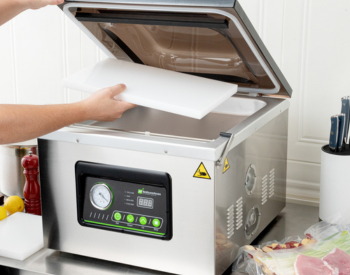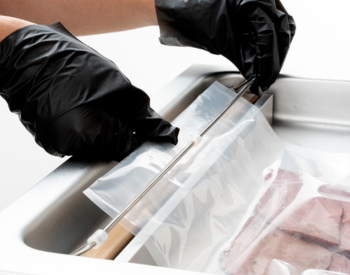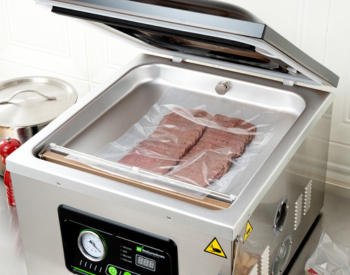In today's fast-paced world, ensuring the freshness and longevity of our food has become more important than ever. Enter the vacuum sealer, a versatile kitchen gadget that helps preserve food by removing air from storage bags or containers. Whether you want to extend the shelf life of perishable items, save money on groceries, or enjoy the convenience of pre-portioned meals, vacuum sealing is a game-changer. In this comprehensive guide, we will explore the various aspects of using a vacuum sealer, sharing valuable tips and techniques.
What Is A Vacuum Sealer?
A vacuum sealer is a versatile kitchen appliance designed to preserve food by removing air from storage bags or containers. It creates an airtight seal that helps protect food from oxygen exposure, which is the primary cause of spoilage.
Understanding The Benefits Of Vacuum Sealing
Before diving into the nitty-gritty of vacuum sealing, let's explore why it's worth incorporating this technique into your kitchen routine. Some notable benefits include:
- Extended shelf life: Vacuum sealing prevents oxygen exposure, the primary culprit behind food spoilage, thereby keeping your food fresh for longer periods.
- Preservation of nutrients: By sealing food in an airtight environment, vacuum sealing helps retain the nutritional value of your ingredients.
- Preventing freezer burn: Vacuum-sealed packages provide a barrier against freezer burn, ensuring that your frozen goods maintain their quality.
- Efficient meal planning: Preparing and storing meals in advance becomes easier with vacuum sealing, allowing for quick and hassle-free cooking.
Essential Vacuum Sealing Tips
To make the most of your vacuum sealer, keep the following tips in mind:
- Use appropriate bags: Opt for high-quality vacuum seal bags specifically designed for this purpose. These bags provide an effective seal and can withstand the vacuuming process.
- Prepare the food for sealing: Clean and dry the food you intend to vacuum seal. Cut larger items into smaller portions if needed, ensuring they fit comfortably within the bag or container.
- Place the food in the bag or container: Open the vacuum-sealing bag or container and carefully place the food inside.
- Leave ample space: Leave sufficient space between the food and the bag's opening to ensure a secure seal.
- Freeze liquids before sealing: To avoid liquid spills during the sealing process, freeze liquids like soups or sauces before vacuum sealing them.
- Double-sealing for safety: For added protection, consider double-sealing your bags, especially when storing liquid or moisture-rich items.
- Label and date: Remember to label your vacuum-sealed packages with the contents and the date of sealing for easy organization and rotation.
Vacuum Sealing Techniques
While the basic principle of vacuum sealing remains consistent, different foods require varying techniques for optimal preservation. Here are a few key considerations:
- Dry foods: For dry items like grains, beans, or snacks, a standard vacuum sealing process works well. Ensure that the bag is tightly sealed before storing.
- Moist or marinated foods: When sealing moist or marinated foods, use the "pulse" or "gentle" mode on your vacuum sealer to prevent liquid from being sucked out. Partially freeze these items to minimize liquid movement.
- Delicate foods: For delicate foods like fruits or soft bread, use the manual or gentle setting on your vacuum sealer to avoid squishing or crushing them.
Vacuum Sealer Types
When it comes to vacuum sealers, there are different types available on the market, each with its own features and functionalities. Understanding the various vacuum sealer types can help you choose the one that best suits your needs. Let's explore some common types of vacuum sealers:
External Vacuum Sealers
External vacuum sealers are one of the most popular types and are suitable for home use. They include a countertop machine with a sealing bar and a separate handheld vacuuming mechanism. These sealers work by placing the open end of the bag into the sealing bar and manually activating the vacuuming and sealing process. External vacuum sealers are versatile, relatively affordable, and can handle various foods.
Chamber Vacuum Sealers
Chamber vacuum sealers are more robust and commonly used in commercial or professional settings. They feature a chamber where the bag or container is placed for sealing. Unlike external sealers, chamber sealers simultaneously remove air from the bag and the chamber. These sealers can create a higher vacuum pressure level, making them suitable for sealing liquids and delicate foods. Chamber vacuum sealers are more expensive and larger, but they offer increased efficiency and versatility.
When choosing a vacuum sealer type, consider the volume of food you plan to seal, the frequency of use, and the specific features you require. Each type has its advantages and is suitable for different purposes, so assessing your needs and preferences is essential before making a decision.
Long-Term Storage & Organization
Vacuum-sealed foods can be stored in various ways, depending on your needs:
- Pantry storage: Sealed dry goods like grains, flour, or coffee can be conveniently stored in your pantry, away from direct sunlight and moisture.
- Refrigerator storage: Vacuum sealing helps keep perishable items like cheese, deli meats, or vegetables fresh for an extended time in the refrigerator.
- Freezer storage: The freezer is where vacuum sealing truly shines. It helps prevent freezer burn, allowing you to store meat, fish, fruits, and vegetables for months without compromising quality.
Can You Boil Food In Vacuum Sealed Bags?
Specialized vacuum sealed bags are available that are safe for sous vide cooking, which involves cooking food in a controlled water bath at lower temperatures. These bags are designed to withstand the temperatures associated with sous vide cooking and provide a secure seal.
Prolong Food Freshness
Mastering the art of vacuum sealing opens up a world of possibilities for efficient meal planning, extended food preservation, and minimized waste. By understanding the benefits, applying essential tips, and exploring various techniques, you can maximize your vacuum sealer and enjoy fresher, better-preserved food for longer periods. So, unleash the power of this handy kitchen tool, and embrace the joys of a well-organized, waste-free kitchen!









